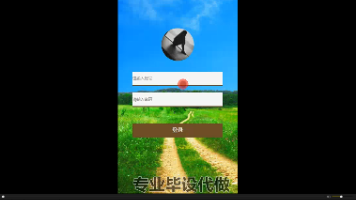数据结构之队列
同栈一样,我们先思考一下底层使用数组来实现还是用链表。入队列时:数组可以直接入队列,没有太多浪费。链表可以设计一个ptail指针,也直接插入即可。出队列时:数组头上出数据,效率会比较低。链表直接头删,效率高。综上,我们使用链表来实现。//定义节点结构}QueueNode;除了结点以外,我们需要定义队列本身。它由两个指针构成,一个指向链表的头结点,一个指向尾结点。//定义队列//队头//队尾}Que
·
1.概念
百度百科中,这样解释
总结一下:队列(Queue)符合先进先出原则,只允许在⼀端进行插入数据操作,在另一端进行删除数据操作的特殊线性表
2.队列的定义
同栈一样,我们先思考一下底层使用数组来实现还是用链表。
入队列时:
数组可以直接入队列,没有太多浪费。
链表可以设计一个ptail指针,也直接插入即可。
出队列时:
数组头上出数据,效率会比较低。
链表直接头删,效率高。
综上,我们使用链表来实现。
//定义节点结构
typedef int QDataType;
typedef struct QueueNode {
QDataType data;
struct QueueNode* next;
}QueueNode;
除了结点以外,我们需要定义队列本身。
它由两个指针构成,一个指向链表的头结点,一个指向尾结点。
//定义队列
typedef struct Queue {
QueueNode* phead;//队头
QueueNode* ptail;//队尾
}Queue;
初始化队列:
//队列初始化
void QueueInit(Queue* pq) {
assert(pq);
pq->phead = NULL;
pq->ptail = NULL;
}
3.入队列
//入队列
void QueuePush(Queue* pq, QDataType x) {
assert(pq);
//创建新节点
QueueNode* newnode = (QueueNode*)malloc(sizeof(QueueNode));
if (newnode == NULL) {
perror("malloc fail");
exit(1);
}
newnode->data = x;
newnode->next = NULL;
//队列为空
if (pq->phead == NULL) {
pq->phead = pq->ptail = newnode;
}
else {
pq->ptail->next = newnode;
pq->ptail = newnode;
}
}
注意:必须时刻保持phead与ptail分别指向队头与队尾。
4.出队列
//出队列
void QueuePop(Queue* pq) {
assert(!QueueEmpty(pq));
//队列中只有一个节点
if (pq->phead == pq->ptail) {
free(pq->phead);
pq->phead = pq->ptail = NULL;
}
else {
Queue* next = pq->phead->next;//next指针存储新的头结点以便改变phead
free(pq->phead);
pq->phead = next;
}
}
检查队列是否为空:
bool QueueEmpty(Queue* pq) {
assert(pq);
return pq->phead == NULL;
}
4.队列的销毁
//销毁
void QueueDestroy(Queue* pq) {
assert(pq);
QueueNode* pcur = pq->phead;
while (pcur) {
QueueNode* next = pcur->next;
free(pcur);
pcur = next;
}
pq->phead = pq->ptail = NULL;
}
因为队列底层是由链表实现的,所以销毁也跟链表一样,只需将phead与ptail指针置空即可。
完
如发现错误,欢迎打在评论区。
主页还有更多优质内容OvO
更多推荐
 已为社区贡献1条内容
已为社区贡献1条内容







所有评论(0)